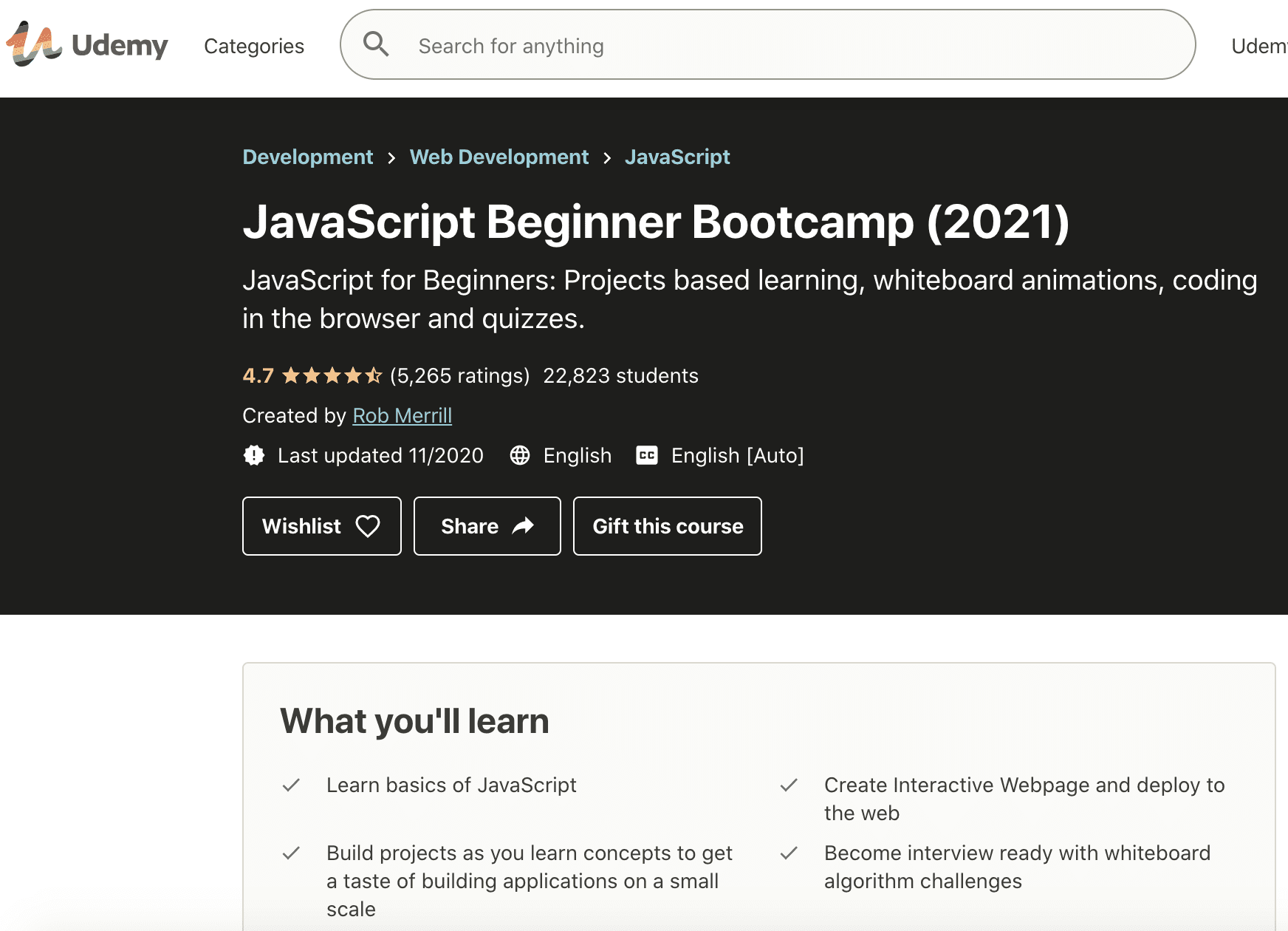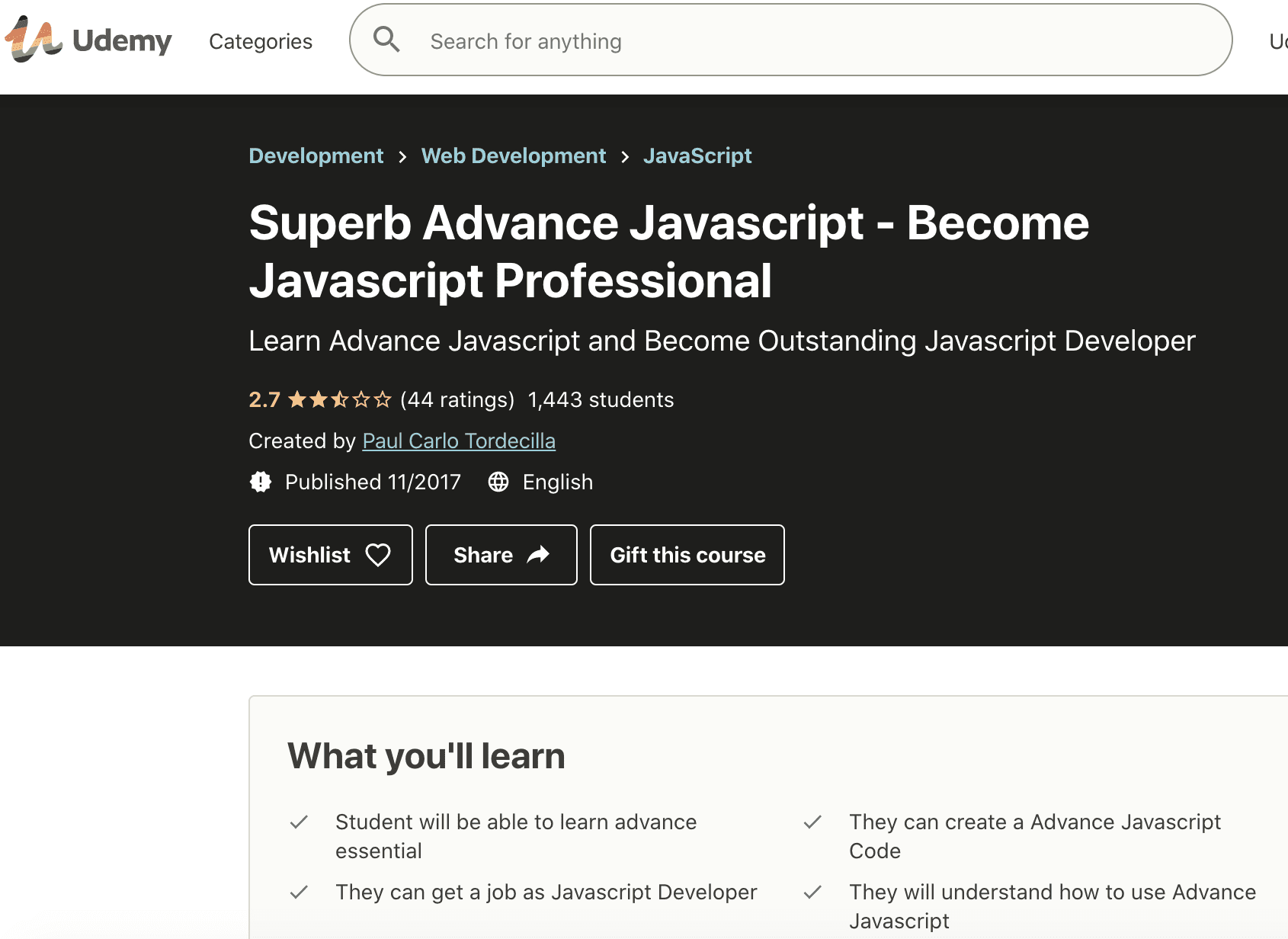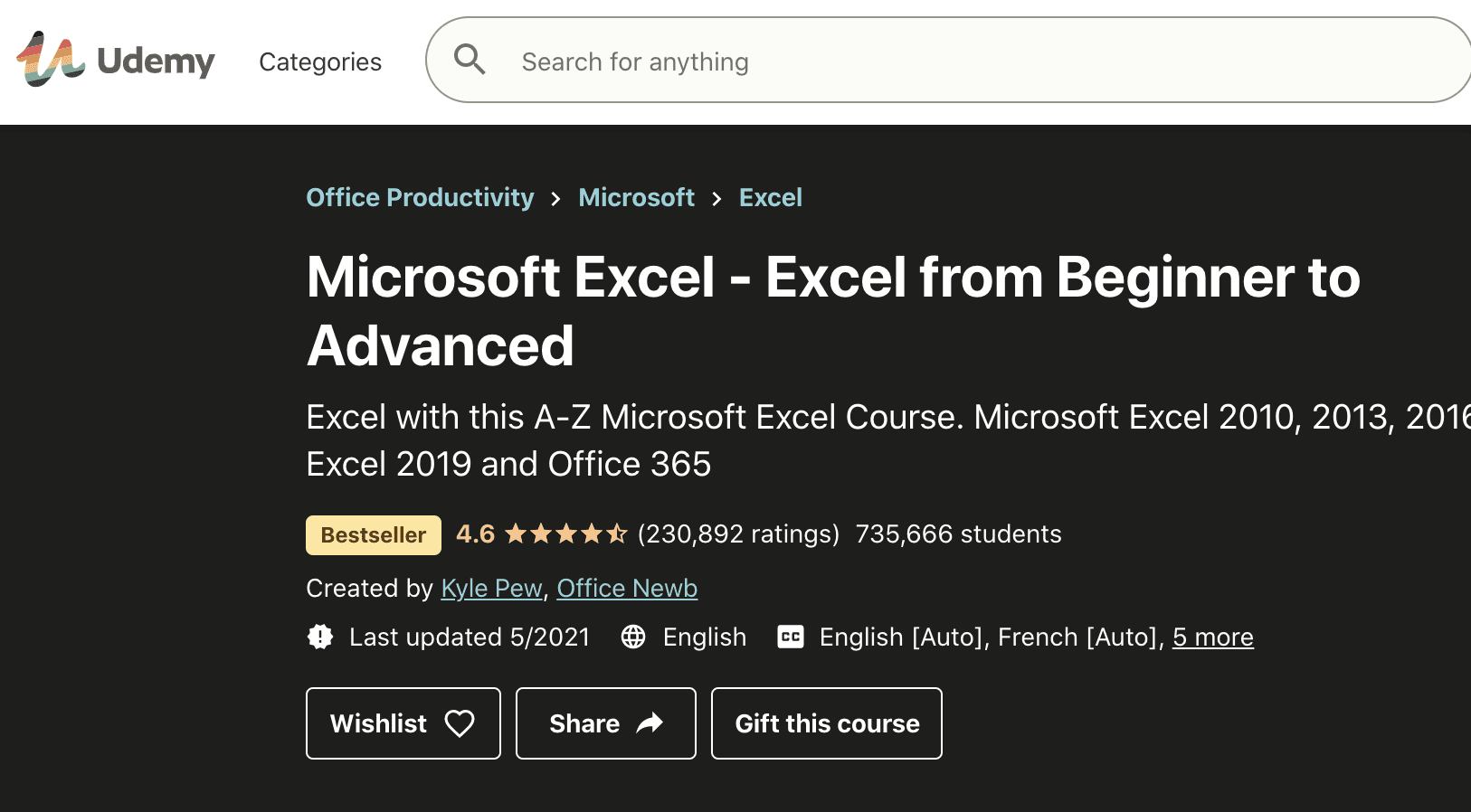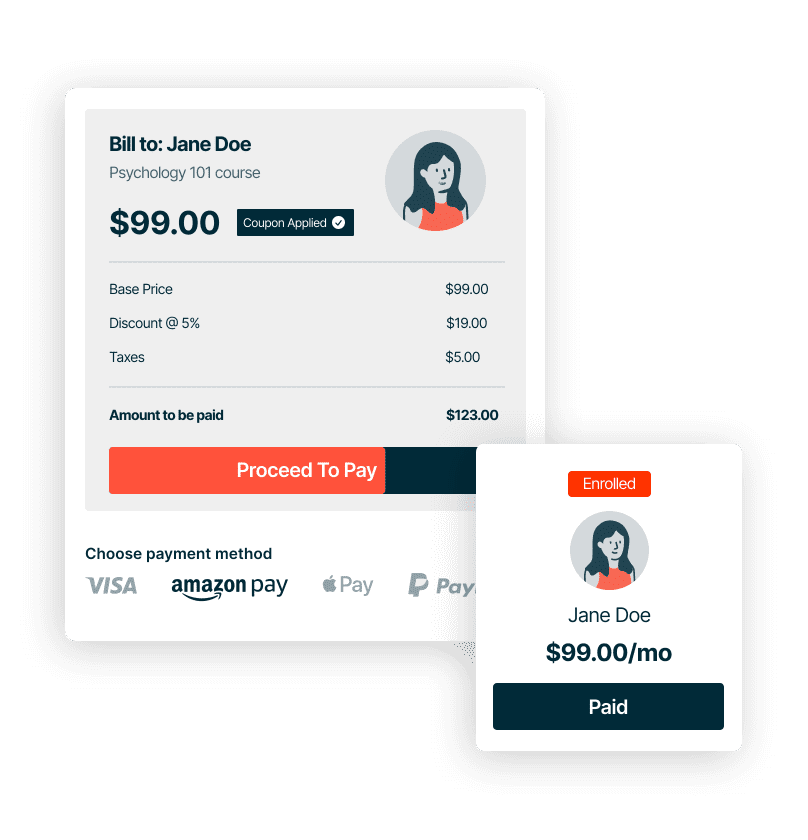The importance of continuous education has never been more evident than in today’s world of AI and ever-evolving job skill requirements. The World Economic Forum* forecasted that a staggering 85 million human-led jobs would be displaced by machine-operated positions by 2025. This impending shift underscores the urgent need for upskilling initiatives with the skills demanded by tomorrow’s job market. From coding workshops to formal education and certifications, the possibilities are endless.
This new paradigm of education sees several advantages: easy access to information, convenience, flexibility, multitasking, time-saving, a plethora of options, and more.
The world of learning is written in a new script, are you scripting your e-learning success story in sync with this new plot?
As a student, a worker, or anyone who’s looking to educate themselves online, they want exactly that – to learn something; not the difficulty of navigating through your courses, figuring out how to choose the right course bundles for themselves, and breaking their head over cumbersome payment processes.
A well-structured course catalog coupled with the right pricing and payment system is the holy grail for you to manifest the multiple advantages that your e-learning platform can provide.
The benefit for you? This will help you deliver more value and help you realize that value through greater revenue.
Without further ado, let’s get into the fundamentals of a well-built course catalog.
The Core Considerations of a Perfect Course Catalog
Four considerations form the pillars of an excellent course catalog. These considerations can be split into the following two components:
I. Content Engine
Begin by building the course catalog. Of course, it is a herculean task consisting of multiple content levers including, defining the problem, outlining your course, designing it, and testing it. I’m sure you’ve got a checklist handy for that. But to make your catalog stand out, here are three key aspects you must keep in mind:
1. Ease of Consuming Information
E-learning is more cost-effective than traditional learning, especially in terms of development costs, but the purchase rates are generally the same or even higher.
While premium pricing can be pretty beneficial to you, there’s an underlying catch; many course creators feel the need to justify the price they’re charging by stuffing the course with too much information. And that becomes a spiraling problem.
Packing your course with extra content will only lead to fatigue for the student and subsequently harm your business. Instead, believe in the objective behind your course – if a user has purchased it, they believe that they can reach their goals. Hence, the aim isn’t to overload information but to deliver the right information to fulfill the student’s learning outcomes.
Asking yourself – “How do I transform the student?” rather than “How do I justify the price?” will set you on the right track. Create a course that is broken down into simpler components that people can consume with ease, actually get through, and attain results.
For instance, take a look at how Hubspot has divided the vast information of its Digital Advertising 101 course into ten lessons. In addition, each lesson is further divided into multiple videos.

2. Target the Right Audience
As an extension to the previous point, it is essential to categorize the information you have broken down properly. Without organizing it, the broken-down information meant to be easily consumable is just chaos on a page. This is where you need to target the audience with the right skill sets – you have an abundance of information on a particular topic, but not everyone needs to go through all of it. Users have different learning styles, different intellectual abilities, and different goals.
For instance, look at how Udemy has targeted its JavaScript content as courses for beginners and advanced learners.


Or, it could be something comprehensive like the following course:

3. Incentivize Learning
Getting the right information, breaking it down, categorizing, and targeting it to the right user base is great, but not enough. The next step would be to package it well. What are you doing to make learning engaging?
The answer lies in bonus content. Quizzes, workshops, assignments, and more make learning interactive and rewarding for your users. It incentivizes them to make learning a habit. Moreover, bonus content is also useful for your users to understand their progress.
A concept that will come in handy here is Instructional Design. The process involves knowing the learner’s state of mind, and figuring out their needs and goals so you can deliver engaging and effective learning that fits their requirements. ID can assist in several ways, including the creation of a well-developed course, adding interactive elements and assessments. For example, integrating graphics with your course, building a great UX, and the like can be done with ID.
II. Revenue Engine
You’ve got a course catalog. Now you have to sell it. With an efficient billing solution, make your catalog a ‘complete package’ for the user (from course selection to checkout), hence, delivering and enhancing functionality to your course catalog. Additionally, add the wow factor to your brand by making the course selection, pricing plans, and payment easy and interactive for your users with:
4. Seamless Payment Processes
For all things payment-related, flexibility is key, be it the way you price your courses to the payment options you offer.
Here are the three features you should focus on to level up your course catalog:
Flexible Payment Options
For a business that’s student-facing, it is vital to offer flexible payment options. Make payment convenient for your users by choosing various payment methods like online banking, credit cards, or payment gateways. Additionally, you can go beyond the payment method to allow your subscribers to select the billing frequency they would like to pay.
Moreover, tailoring your prices to the local currencies and tax regulations ensures that you can go to market faster and expand your business. For example, charging a native Japanese in Yen instead of USD can help increase your conversion rates. What’s even better is if your tech stack can fetch those exchange rates in real time!
For instance, Chargebee’s billing logic helps you customize the billing experience based on frequency, date, and payment methods to accommodate based on learners’ preferences. It also integrates 30+ payment gateways to let you accept payments in 100+ currencies via direct debit, digital wallets, credit cards, and offline payments from anywhere in the world.
Quick Pricing Iterations
There are quite a few ways you can choose to price your courses, be it a flat fee, tiered, or usage-based. Each pricing model has various benefits, and hence you must experiment with them to figure out the best fit for your platform to maximize value to your learners and revenue for your business. Moreover, it is also important to ensure that your tech stack can allow you to roll out pricing in a matter of minutes and not months.
For instance, Chargebee has a platter of pricing options that allows you to get your pricing right from the beginning and bring flexibility to your billing.
Plan Management
Finally, everything you’ve done so far with pricing and payment options boils down to how you effectively manage your plans. Adding or removing courses from a plan is a fairly simple task. But what if you have to do this a hundred times on top of your existing code? The outcome will be a bloated product catalog where you have to go through endless workarounds even to make a fundamental change in your course catalog. Hence, it’s essential to have a lean catalog. For example with Chargebee, you can efficiently manage multiple products and plans and make changes without much code.
For more information on the different levers of the revenue engine and what your tech stack should enable you to do, read our guide on Scaling E-Learning Businesses through Experimentation.
Summing it up with the Right Tech Stack
It’s easy to bloat your back-end with patchy codes unless you keep your tech agile. Finding a platform that supports your pricing model and helps you set up your course in minutes and roll with it is the cornerstone for your success.
It is important to go for low-code or no-code options that you can plug into your tech stack so you can focus on what’s important – delivering great value and a greater experience to your users.
And this can be achieved with a robust product catalog. The catalog should help you;
- neatly map all courses,
- define and attach multiple currencies, billing frequencies, add-ons, and metered charges to your plans without wrecking catalog sanity.
For instance, Chargebe’s Product Catalog 2.0 redefines how you manage your product catalog and subscriptions for your business. It empowers you to build an optimal and scalable product catalog for your business by allowing you to:
- Maintain a lean catalog by consolidating multiple currencies and billing frequency price points within a single plan or addon.
- Save time and effort by improving your operational efficiency with an uncomplicated product catalog.
- Unlock revenue opportunities by reducing the go-to-market time for new product launches, currencies, and billing frequencies.
- Streamline multi-product offerings by managing multiple product lines and pricing using product families, all with zero additional code.
- Gain better control in areas of feature management and subscription change management.
- Go global without billing and tax compliance worries holding you back.
- Drive data-led decisions based on real-time revenue intelligence.
For example, the e-learning platform Study.com faced challenges back in 2014 when they tried to monetize their courses and transition to a subscription-based model. They realized that they were wasting time and resources on relatively low-value but frequent manual interventions to support their growing subscriber base. Hence, they served a single market, offered a single payment gateway, and had a small course catalog.
This was when they decided to opt for the right tech stack that would transform their growth. With an agile subscription management platform, Study.com scaled painlessly scaled its offering across five products while catering to millions of learners and educators! Today, they have over 85k courses and offer four payment gateways.
In Conclusion
A course catalog is essentially what makes up your e-learning platform. Anything less than perfection is not enough today. To deliver unique value propositions to your users, you need a holistic approach: a well-defined course catalog along with a product catalog that’ll help you manage, maintain, and enhance your course catalog. Of course, framing the content is all on you, but we can help you with the necessary tools to get there.
With Chargebee as your partner in growth, you can dedicate yourself to building a perfect course catalog without worrying about developer dependencies and operational hiccups. Instead, get the operational sophistication to achieve, sustain, and scale recurring revenue for your business!
To know more about how we can help, visit us here.






